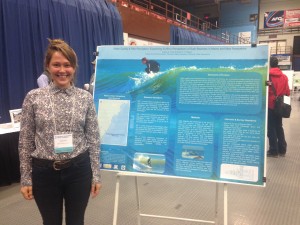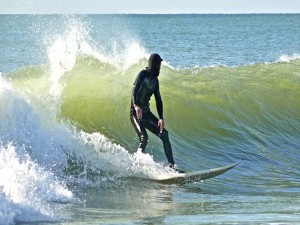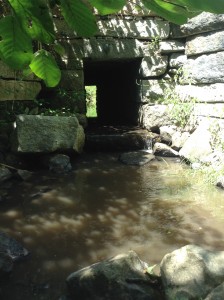Yesterday I had the pleasure of attending the Maine Sustainability and Water Conference in Augusta, ME. Hosted by the Senator George J. Mitchell Center for Sustainability Solutions and the United States Geological Survey, the conference had14 different sessions ranging from Citizen Science to Urban Sustainability to Ocean Acidification. The session of interest to me was Safe Beaches and Shellfish. I am working as a graduate research assistant under Dr. Shannon Rogers. Dr. Rogers is the adviser and project manager for “Exploring the Local Ecological Knowledge of Surfers in Maine and New Hampshire”. This work is part of the New England SusTainability Consortium (NEST), a solutions-driven, outcome-oriented and place-based sustainability project focused on socio-environmental systems in the Gulf of Maine. The project is a transdisciplinary collaboration between eight universities and colleges in Maine and New Hampshire. The overarching goal of the consortium is to bridge the gap between science and decision making with respect to shellfish bed closures and recreational beach advisories in the Gulf of Maine. Success of the consortium in achieving its goals relies on collaboration between biophysical scientists and social scientists as well as integration across different institutions and states. It is an exciting project to be a part of!
Under the NEST umbrella, Dr. Rogers and I have focused on the surfing population of southern Maine and New Hampshire. We chose surfers because they represent a subpopulation of beach goers that are at a higher risk of suffering from the effects of microbial pathogens. This occurs for a number of different reasons. 1), Surfers are in the water for longer periods of time and become fully emerged (versus wading), 2), surfers participate in the sport year round (seasonal variation in rainfall, changes in waste water treatment plant outputs), 3) given the nature of the sport surfers are more apt to ingest water or get cuts or scrapes, and 4), they often surf during or after storm events when water quality is at the lowest.
Given the level of pathogen exposure and the corresponding health risk, coupled with a strong sense of environmental sustainability within the local surfing community, Maine and New Hampshire surfers may provide valuable insight and local ecological knowledge into water quality issues. Through this study we hope to gain a better understanding of the local environmental knowledge held within this group and if risk perception plays a role in the decision to surf or not to surf.
It is certainly the ‘gnarliest’ research around and I’m looking forward to the field season. Soon we’ll be commencing the interview process. The plan is to conduct scoping interviews followed up with intercept surveys and additional in depth interviews. This summer you’ll find me on surf beaches of Maine and New Hampshire! Hopefully I’ll get lessons and ride some Gulf of Maine waves!
My work on NEST is supported by the National Science Foundation’s EPSCoR programs in Maine and New Hampshire.
















